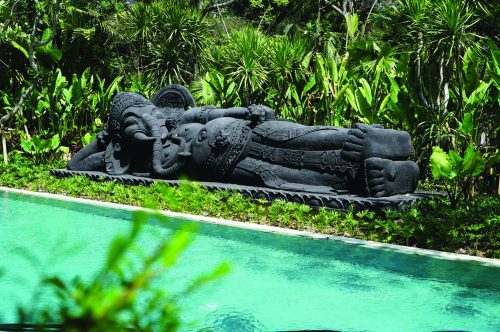
As well as a beautiful white sand beach and a safe swimming area, there are plenty of restaurants, nightspots and good shopping in Sanur.
Sanur, a five kilometre east-facing stretch of picturesque coast, is an idyllic location. It is an upmarket alternative to Kuta, yet not as exclusive (or expensive) as Nusa Dua.
The area has a relaxed holiday atmosphere without the hustle and bustle of central Kuta. As well as a beautiful white sand beach and safe swimming area, there are plenty of restaurants, nightspots and good shopping.
From the 13th to the 16th centuries, chronicles refer to the importance of Sanur priests and scholars and today, Sanur is one of the few communities still ruled by priests of the Brahmana caste.
These priests recognised both the threat and opportunity that tourism presented and imposed the famous rule that buildings cannot be taller than the highest coconut tree and established village co-operatives to ensure that a share of economic benefits remains within the community.
Known throughout Bali as a home to sorcerers and healers, Sanur is often revered. The black-and-white chequered cloth seen around Bali is emblematic of Sanur. Symbolising the balance of good and evil, it can be found adorning the many temples in the region.
A string of ancient temples can be found near the beach. Their low-corralled walls and platform altars are peculiar to Sanur. Anniversary celebrations at these temples are exuberant and strange to Westerners. Sanur is also home to the oldest dated artefact found on Balia pillar, with inscriptions on it recounting military victories more than a thousand years ago and making reference to King Sri Kesari Varma who came to Bali in AD 913 to teach Buddhism.
Prior to World War II, Sanur was popular with a few prominent Western artists such as Adrien Jean Le Mayeur, writer Walter Spies and anthropologist Jane Belo. The Belgian artist Le Mayeur lived in his house in Sanur from 1935 until 1958 and it is now a museum.
Activities in the area include camel rides, cycling and a plethora of watersports such as sea walking and snorkelling at the nearby reef.
Sanur is renowned for its spectacular kite flying competitions during July, August and September which are staged by the local community councils. The kites can be up to 10 metres long, require a dozen men to launch them and traffic is halted when they’re carried down the roads.
Part of the charm of Sanur lies in its tranquility. Mainly a resort for families wanting to experience genuine Balinese culture, the nightlife is limited to the bars and discos in the larger hotels.
A huge advantage is its proximity to inland destinations, such as Ubud, which is around 40 minutes away.
Sanur is a place of remarkable contrasts. It is rich in culture, history and activity and is bound to intrigue any visitor.

